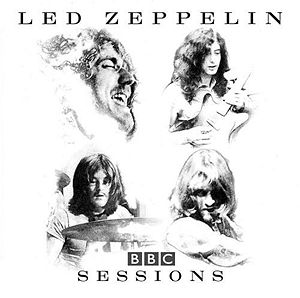
Ever since he established himself as the chief surviving Beatle, news of any new McCartney album has always brought a mix of anticipation and dread. Such was the case with
Chaos And Creation In The Backyard. The first disturbing sign was the title, accompanied by a cover based on a photo brother Michael took some 45 years previously. Then came the news that not only was it produced by the guy who worked with Radiohead and Beck, but the crackerjack band he was soon to tour with were not used; rather he played most everything himself, leading to the obvious comparisons to his first album (but none to the less-heralded
McCartney II or
Flaming Pie).
Our fear was unfounded. Each of the tracks here was honed to near-perfection, and nothing sounds like it was tossed off in a few minutes. Rather than the homemade sound of the McCartneys or the slap-dash but pleasant Pie, here he went into a room with a young producer who had the cojones to goad him into completing tracks worthy of the McCartney brand.
“Fine Line” is probably the best place to start the program, since it’s the most overtly McCartneyesque song here. Musically it’s a cross between “Flaming Pie” (the song) and “Keep Under Cover” (from Pipes Of Peace), and it’s a toe-tapper. “How Kind Of You” is based around a series of loops, mostly of wine glasses. It’s a mysterious one, and sits there until the buildup in the last half, which really takes hold. “Jenny Wren” is very reminiscent of early Wings stuff, and comparing it to “Blackbird”, as so many did, sells it short; it’s very original, and takes what could have been a lazy rewrite to another level. We’ve yet to figure out what “At The Mercy” sounds like. “Friends To Go” was said to have been written in George’s style, and it shows particularly in the chords and harmonies. George might have even liked it. While “English Tea” may come too close to “Cups And Cakes” by Spinal Tap, at least it’s short, with a flute solo from “Happiness Runs” off Mary Hopkin’s first album. At the same time, “Too Much Rain” is a little too close to “Young Boy”, but there’s a Wings feel on this, and a good ending too.
“A Certain Softness” is one of the few that features other players, so maybe that’s why it sounds out of place. “Riding To Vanity Fair” starts out with the same vibe as heard on World Party’s song with a similar title; no word yet on what Karl Wallinger thinks about it. It’s a rare mood for Paul, spooky and genuinely pissed off. “Follow Me” isn’t great, except for the middle bit. Fats Domino meets the Beach Boys in “Promise To You Girl”. He sounds decades younger, particularly in that guitar solo, but unfortunately it ends too quickly. Except for that bass, the first 30 seconds or so of the atmospheric “This Never Happened Before” don’t sound at all like him. The grand closer “Anyway” is a perfect example of what makes him so good. Like “Only Love Remains” or “Beautiful Night”, it would stand out on one of his not-so-stellar albums, except here it’s on an album full of more worthy companions. The steal from “People Get Ready” wears off soon enough, making way for a nod to “Little Willow”. (Apparently the hidden track, a hodgepodge not unlike “Rinse The Raindrops”, is called “I’ve Only Got Two Hands”. It definitely runs rings around “Ou Est Le Soleil”.)
The album divided a lot of people, which is too bad; overall it’s very strong, very focused and very mature. “Fine Line” may be the only one he tossed off quickly; the rest definitely sound like they were worked on and honed to satisfaction. Sonically it could even be compared to the White Album, in that there’s almost a claustrophobic feeling to the tracks.
If the sober-sounding Chaos And Creation In The Backyard was to be Paul’s last statement as a songwriter, it would have been an amazing one. Luckily, he hasn’t planned on checking out anytime soon. He went on tour soon afterwards, and any of the hype about the album was lost in the tabloids under news of his impending divorce from Heather. (Meanwhile, a souvenir of his previous tour snuck out in the form of Twin Freaks, a double vinyl collection of mashup remixes of solo tracks in collaboration with DJ Freelance Hellraiser that were played before each show. It wasn’t easy to find in the pre-streaming era, and it’s a little too dancey, but it’s fun to pick out some of the samples, much like a certain Beatles project that came out the following year.)
Paul McCartney Chaos And Creation In The Backyard (2005)—4½


:format(jpeg):mode_rgb():quality(90)/discogs-images/R-1568715-1384319007-3742.jpeg.jpg)


